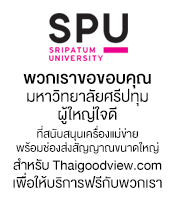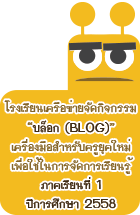- user warning: Duplicate entry '536306482' for key 'PRIMARY' query: INSERT INTO accesslog (title, path, url, hostname, uid, sid, timer, timestamp) values('วัฒนธรรมการเรียกชื่อของคนจีน', 'node/83839', '', '18.118.126.11', 0, '0de9d23aadee7875718a52b706c10c72', 141, 1716157870) in /home/tgv/htdocs/modules/statistics/statistics.module on line 63.
- user warning: Table 'cache_filter' is marked as crashed and should be repaired query: SELECT data, created, headers, expire, serialized FROM cache_filter WHERE cid = '3:e51d9e1cea096e317640b7e708be6501' in /home/tgv/htdocs/includes/cache.inc on line 27.
- user warning: Table 'cache_filter' is marked as crashed and should be repaired query: UPDATE cache_filter SET data = '<!--paging_filter--><p align=\"center\">\n<strong>Punctuation เครื่องหมายวรรคตอน</strong>\n</p>\n<p>\nPeriod ( . ) <br />\n1.ใช้เมื่อจบประโยคในประโยคบอกเล่าหรือประโยคคำสั่ง<br />\nI saw the boy.<br />\nLet\'s go to the shop.<br />\nGive me the pen please.<br />\n2.ใช้หลังอักษรย่อต่างๆหรือคำย่อ<br />\nDr.=Doctor, adv.=adverb U.S.A.=United States of America<br />\nComma ( , )<br />\n1.ใช้คั่นเพื่อแยกคำนามซ้อน<br />\nThailand, a country in Asia, is famous for its beautiful temples.<br />\n2. ใช้แยกระหว่างคำที่อยู่ในกลุ่มเดียวกันเช่น<br />\nI want a car, a motorcycle, and a bicycle.<br />\n3.ใช้แยกคำคุณศัพท์ที่บอกสี<br />\na blue, yellow bicycle<br />\n4.ใช้แยกคำคุณศัพท์ที่ตามหลังคำนาม<br />\nThe modal is dark, tall and handsome.<br />\n5. คั่นข้างหน้าหรือข้างหลังชื่อ เช่น<br />\nChristina, where have you been?<br />\nWhat would you like to eat, Pranee?\n</p>\n<hr id=\"null\" />\n<!--pagebreak--><!--pagebreak--><p>\n<br />\n6. คั่นประโยคที่ตามหลัง Yes, No และ Well ที่ขึ้นต้นประโยค<br />\nAre you Thai? Yes, I am.<br />\nWell, I\'m not sure if I can do that.<br />\n7. ใช้เพื่อแยกข้อความในประโยคคำพูดเช่น<br />\nHe said, "They are happy."<br />\n8. คั่นระหว่างปีที่ตามหลังเดือน, ถนนกับเมือง,เมืองกับประเทศเช่น<br />\nToday is May 4th, 2000.<br />\nDang lives at 56 Sukumvit Road, Bangkok.\n</p>\n<p>\nSemi-colon ( ; )<br />\n1. ใช้คั่นประโยคที่มีเครืองหมาย comma คั่นอยู่แล้วเช่น<br />\nHello, Nittaya; Please come here.<br />\n2. ใช้ทำหน้าเพื่อเชื่อมประโยคสองประโยคที่มีเนื้อหาเกี่ยวพันกันวางไว้หน้า adverbได้แก่คำว่า<br />\ntherefore(ดังนั้น) besides(นอกจากนี้) เป็นต้น<br />\nCanada is very cold; therefore people must wear heavy coats in the winter. </p>\n<!--pagebreak--><!--pagebreak--><p>\nColon ( : )<br />\n1.ใช้ colon ก่อนการประโยคอธิบาย<br />\nHe decided to buy a car:he had to travel to the remote area.<br />\n2.ใช้แจ้งรายการ ซึ่งนิยมใช้หลังคำเหล่านี้ the following หรือ as follows เป็นต้น เช่น<br />\nWe require the following for our camping trip: tent, bags, and boots.<br />\n <br />\nQuestion Mark ( ? )<br />\nใช้กับประโยคคำถามเช่น<br />\nIs that food hot?<br />\nWhat is your nationality?<br />\nDo you like durian?<br />\nHow tall are you?\n</p>\n<hr id=\"null\" />\n<!--pagebreak--><!--pagebreak--><p>\n<br />\n <br />\nExclamation Mark ( ! )<br />\nใช้หลังคำอุทานหรือประโยคอุทาน เช่น<br />\nOh! you are so beautiful.<br />\nWatch out!<br />\nGo away!<br />\n <br />\nApostrophe ( \' )<br />\n1. ใช้แสดงความเป็นเจ้าของของคำนามทั้งนามเอกพจน์และนามพหูพจน์ เช่น<br />\nThe doctor\'s car<br />\nThe men\'s club<br />\nSomkiet\'s dog<br />\n2.ใช้แสดงความเป็นเจ้าของของคำนามพหูพจน์ที่เติม s หรือชื่อเฉพาะที่มี s เช่น<br />\nThe girls\' books<br />\nCharles\' school<br />\n3. ใช้คำย่อหรือรูปย่อ<br />\ncan\'t (cannnot)<br />\nit\'s (it is)<br />\nI\'d rather (I woud rather)\n</p>\n<hr id=\"null\" />\n<!--pagebreak--><!--pagebreak--><p>\n <br />\nQuotation Marks ( " " )<br />\nใช้เขียนคร่อมข้อความที่เป็นประโยคคำพูดเช่น<br />\nHe said, "I am going home."<br />\n"I can help you move," Narong volunteered.<br />\n <br />\nHypen ( - )<br />\nใช้เพื่อเชื่อมคำสองคำให้เป็นคำเดียวกันเช่น<br />\nex-husband<br />\nanti-American<br />\ntwo-day holiday<br />\n <br />\nDash ( - )<br />\nใช้เพื่อเน้นข้อความที่แทรกเข้ามาเพื่ออธิบายหรือใช้คั่นคำละไว้ในฐานที่เข้าใจหรือเปลี่ยนใหม่ เช่น<br />\nI got lost, forgot my bag, and missed my plane-- it was a terrible trip.<br />\nIf I had a lot of money, I would ---Oh, what am I thinking? I will never be rich.<br />\nPunctuation tests coming soon! </p>\n', created = 1716157880, expire = 1716244280, headers = '', serialized = 0 WHERE cid = '3:e51d9e1cea096e317640b7e708be6501' in /home/tgv/htdocs/includes/cache.inc on line 112.
Punctuation เครื่องหมายวรรคตอน
Punctuation เครื่องหมายวรรคตอน
Period ( . )
1.ใช้เมื่อจบประโยคในประโยคบอกเล่าหรือประโยคคำสั่ง
I saw the boy.
Let's go to the shop.
Give me the pen please.
2.ใช้หลังอักษรย่อต่างๆหรือคำย่อ
Dr.=Doctor, adv.=adverb U.S.A.=United States of America
Comma ( , )
1.ใช้คั่นเพื่อแยกคำนามซ้อน
Thailand, a country in Asia, is famous for its beautiful temples.
2. ใช้แยกระหว่างคำที่อยู่ในกลุ่มเดียวกันเช่น
I want a car, a motorcycle, and a bicycle.
3.ใช้แยกคำคุณศัพท์ที่บอกสี
a blue, yellow bicycle
4.ใช้แยกคำคุณศัพท์ที่ตามหลังคำนาม
The modal is dark, tall and handsome.
5. คั่นข้างหน้าหรือข้างหลังชื่อ เช่น
Christina, where have you been?
What would you like to eat, Pranee?
ช่วยด้วยครับ
นักเรียนที่สร้างบล็อก กรุณาอย่า
คัดลอกข้อมูลจากเว็บอื่นทั้งหมด
ควรนำมาจากหลายๆ เว็บ แล้ววิเคราะห์ สังเคราะห์ และเขียนขึ้นใหม่
หากคัดลอกทั้งหมด จะถูกดำเนินคดี
ตามกฎหมายจากเจ้าของลิขสิทธิ์
มีโทษทั้งจำคุกและปรับในอัตราสูง
ช่วยกันนะครับ
ไทยกู๊ดวิวจะได้อยู่นานๆ
ไม่ถูกปิดเสียก่อน
ขอขอบคุณในความร่วมมือครับ
ด่วน...... ขณะนี้
พระราชบัญญัติลิขสิทธิ์ (ฉบับที่ 2) พ.ศ. 2558
มีผลบังคับใช้แล้ว
ขอให้นักเรียนและคุณครูที่ใช้งาน
เว็บ thaigoodview ในการส่งการบ้าน
ระมัดระวังการละเมิดลิขสิทธิ์ด้วย
อ่านรายละเอียดที่นี่ครับ







